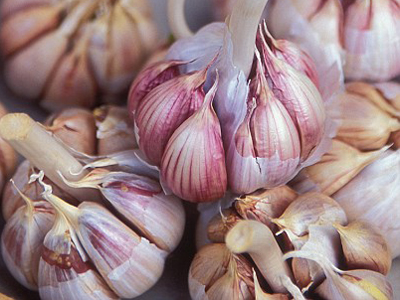Misuse of antibiotics in recent decades has created a very dangerous phenomenon as it is difficult to control: microbial resistance to antibiotic treatment. Scientists lead a struggle for the discovery of new antibiotics, more powerful to cope with new infections, but overlook the fact that nature gave us the most efficient remedies: natural antibiotics.
Sir Alexander Fleming discovered the miraculous power of mold in 1928, which then arose into penicillin. Although antibiotics were natural-based at that times, the pharmaceutical industry and too frequent administration turned them into some drugs that creates as many problems one should actually solve.
In these circumstances, it is best to go back to nature, where we find the most effective antibiotics and antivirals without the side effects of allopathic medicine.
Garlic
Garlic is used worldwide for centuries for many medicinal purposes: it seems that garlic treats everything from earaches, pneumonia, Hlicobacter pylori infection, MRSA, influenza, blood diseases, prevents cardiovascular diseases, and much more. Recent studies have also confirmed its powers. Garlic contains antioxidants which kills countless bacteria and free radicals, protecting the immune system. Allicin, the active ingredient in garlic will kill a number of viruses, something that synthetic antibiotics can’t do yet, and also, the fungi such as Candida albicans.
Echinacea
Like garlic, echinacea is used for hundreds of years for its medicinal virtues. Used on a daily basis, it strengthens the immune system and fight a number of infections in the human body. In the past, echinacea was used to treat open wounds, diphtheria, poisonings, syphilitic lesions and other bacterial conditions. Currently, the plant is best known for its antiviral effects, but also as a weapon against one of the most virulent infectious agents, Staphylococcus aureus, a bacterium that can generate the extremely dangerous MRSA (Methicillin-resistant Staphylococcus aureus).
Colloidal Silver
Germicidal and anti-bacterial properties of colloidal silver were discovered about a hundred years ago. Since then, numerous studies have shown strength in fighting bacteria, fungi and viruses. Dermatitis, wounds, infections of all kinds and even MRSA can be cured with colloidal silver.
Pau D’Arco, or Tabebuia
This is a native plant of South America, which its active ingredient is lapachol, a substance that has been shown to fight against any type of infection, whether bacterial, fungal or viral. Moreover, some studies suggest that the herb may have significant effects in fighting cancer. In the past, tea or decoction from Pau D’Arco plant was used by indigenous people in South America to strengthen the body and fight life-threatening diseases.
Manuka Honey
The most effective (and also delicious!) antibacterial agent comes from Australia and New Zealand, called Manuka honey. Researchers have found that it has the ability to kill some deadly microbes, including MRSA and bacteria. Methylglyoxal (MGO) is the major antibacterial component of manuka honey. Other smaller antibacterial effects are expected to arise from the osmolarity and pH of the manuka honey. In vitro studies indicate methylglyoxal is an effective antimicrobial agent against forms of MRSA, although studies have not been done in humans.

